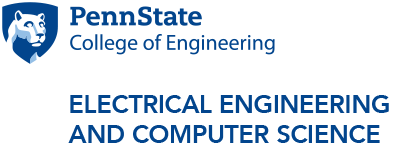Photophysics and photochemistry of organic semiconductors in microcavities
Abstract
Organic (opto)electronic materials have been explored in a variety of applications in electronics and photonics, driven by several advantages over traditional silicon technology, including low-cost processing, fabrication of large-area flexible devices, and widely tunable properties through functionalization of the molecules. Over the past decade, remarkable progress has been achieved in understanding physical mechanisms and in developing guidelines for the material design, which boosted the performance of organic devices that rely on photophysics and/or (photo)conductive properties of the material. However, further improvements in device performance are desirable, and challenges related to (photo)stability of organic devices need be addressed. One of the major thrusts in developing new organic materials and device concepts has focused on materials exhibiting singlet fission, which is a process where one photon can generate two pairs of charge carriers and enable, for example, enhanced power conversion efficiencies in solar cells. Nevertheless, fundamental questions pertaining to exciton physics in singlet fission materials, and how it can be manipulated by material design and external parameters, remain. Strong exciton-photon coupling that occurs when an organic film is placed in a microcavity, enabling formation of a light-matter hybrid state (polariton), represent a largely unexplored potential to control photophysics and photochemistry in singlet fission materials using polaritons. In this talk, I will give examples of our efforts aiming to understand and tune exciton and polariton properties in model singlet fission organic materials towards exploiting these properties in devices and controlling photochemical reactions responsible for photostability.
Bio
Oksana Ostroverkhova is a Professor of Physics at Oregon State University (OSU). She received her Diploma with Honors in Physics and Optical Engineering (1996) from Kyiv National University in Kyiv, Ukraine and Ph.D. in Physics (2001) from Case Western Reserve University in Cleveland, USA where she specialized in photoconductive and nonlinear optical properties of polymers and liquid crystals in the group of Prof. K. Singer. Her postdoctoral work at Stanford University in the group of Prof. W. E. Moerner involved physics and applications of photorefractive organic materials; there she also developed interest in single-molecule fluorescence spectroscopy of organic electronic materials. The Killam Memorial Fellowship award enabled Dr. Ostroverkhova’s work on ultrafast THz spectroscopy of organic semiconductors in the group of Prof. F. A. Hegmann at the University of Alberta in Edmonton, Canada, followed by her faculty appointment at OSU Physics in 2005. She is a recipient of several awards, including the NSF CAREER award, OSU Carter Award for Outstanding and Inspirational Graduate Teaching, Milton Harris Award for Basic Research, and SciRis Innovation Award. Her current research interests are in the optoelectronic and photonic properties of organic materials spanning various time and spatial scales, development of nature-derived sustainable materials, spectroscopy and device applications of 2D magnets, and utilizing optical properties of materials in entomology.
Additional Information:
**Note: This colloquium will be delivered via Zoom. For zoom link, please contact Prof. I. C. Khoo.
Event Contact: Iam-Choon Khoo



